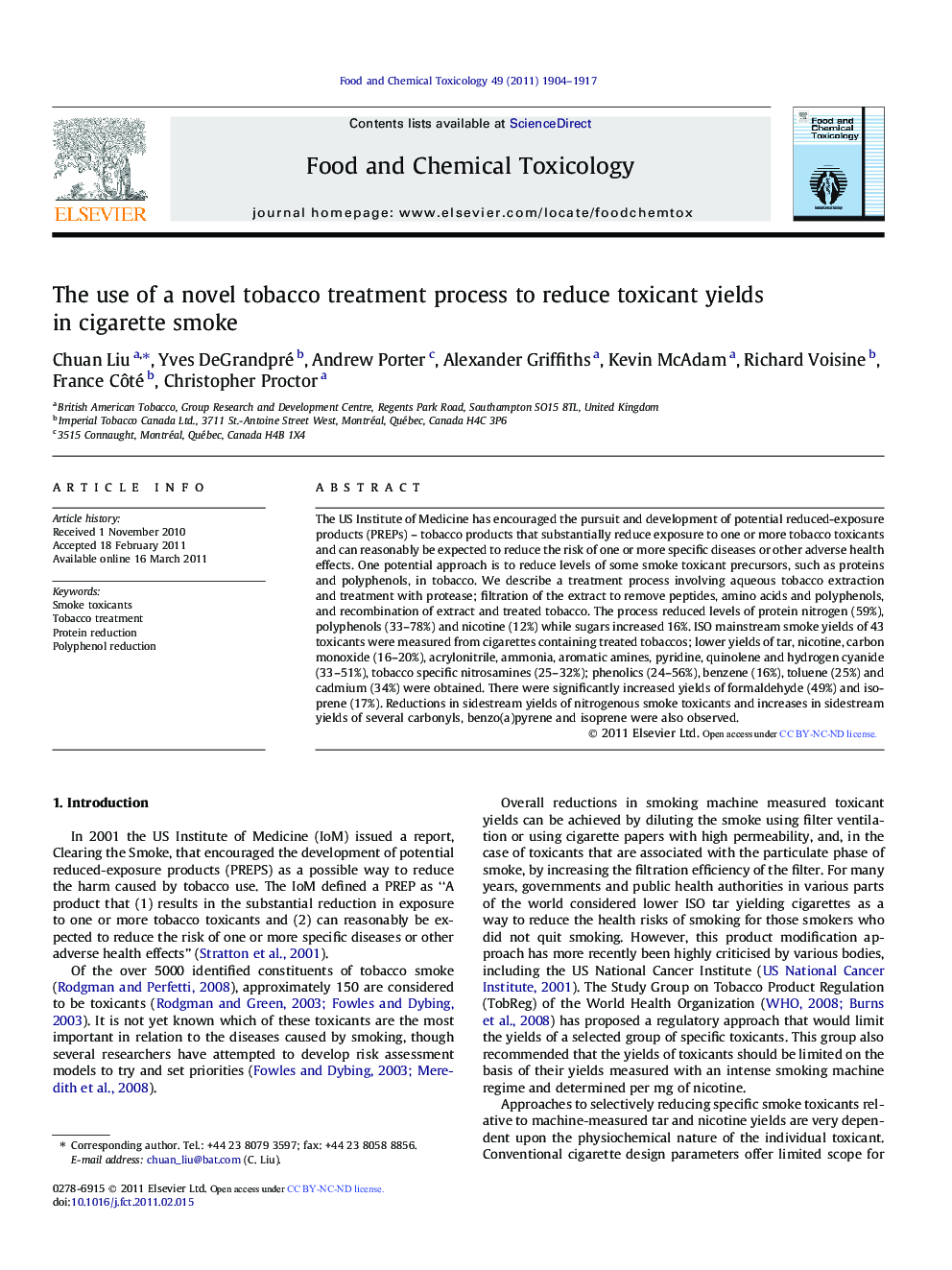| Article ID | Journal | Published Year | Pages | File Type |
|---|---|---|---|---|
| 5853025 | Food and Chemical Toxicology | 2011 | 14 Pages |
The US Institute of Medicine has encouraged the pursuit and development of potential reduced-exposure products (PREPs) - tobacco products that substantially reduce exposure to one or more tobacco toxicants and can reasonably be expected to reduce the risk of one or more specific diseases or other adverse health effects. One potential approach is to reduce levels of some smoke toxicant precursors, such as proteins and polyphenols, in tobacco. We describe a treatment process involving aqueous tobacco extraction and treatment with protease; filtration of the extract to remove peptides, amino acids and polyphenols, and recombination of extract and treated tobacco. The process reduced levels of protein nitrogen (59%), polyphenols (33-78%) and nicotine (12%) while sugars increased 16%. ISO mainstream smoke yields of 43 toxicants were measured from cigarettes containing treated tobaccos; lower yields of tar, nicotine, carbon monoxide (16-20%), acrylonitrile, ammonia, aromatic amines, pyridine, quinolene and hydrogen cyanide (33-51%), tobacco specific nitrosamines (25-32%); phenolics (24-56%), benzene (16%), toluene (25%) and cadmium (34%) were obtained. There were significantly increased yields of formaldehyde (49%) and isoprene (17%). Reductions in sidestream yields of nitrogenous smoke toxicants and increases in sidestream yields of several carbonyls, benzo(a)pyrene and isoprene were also observed.
